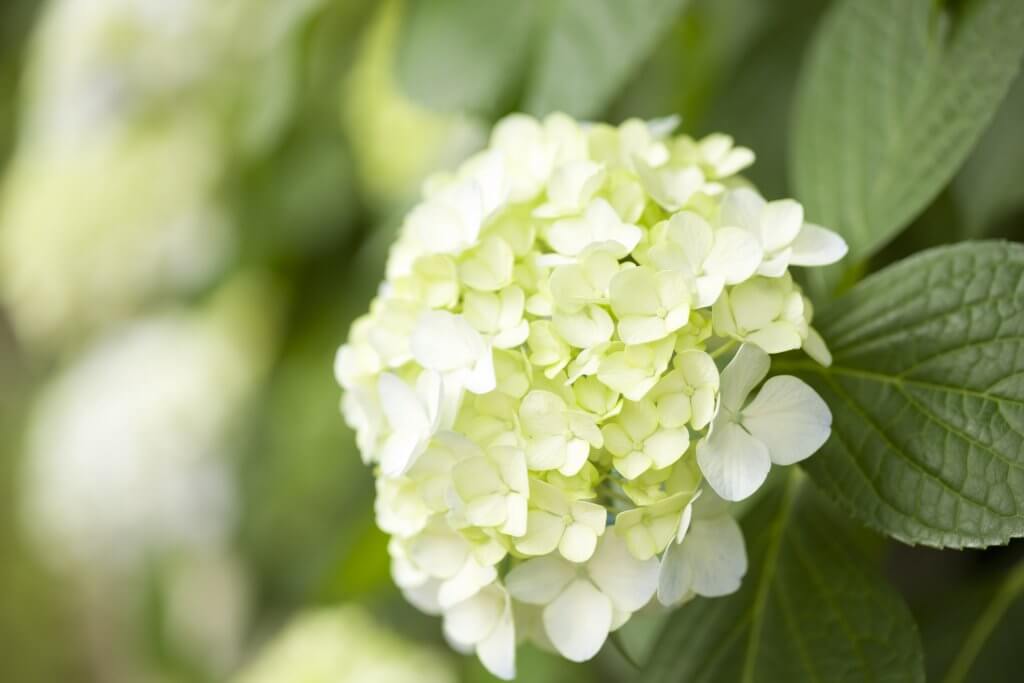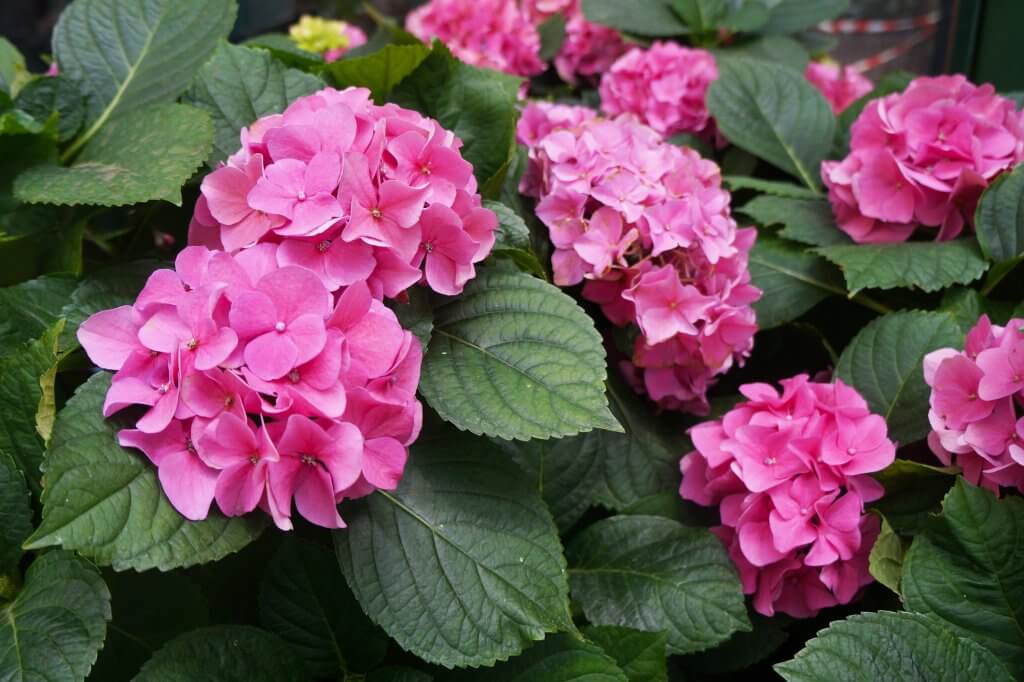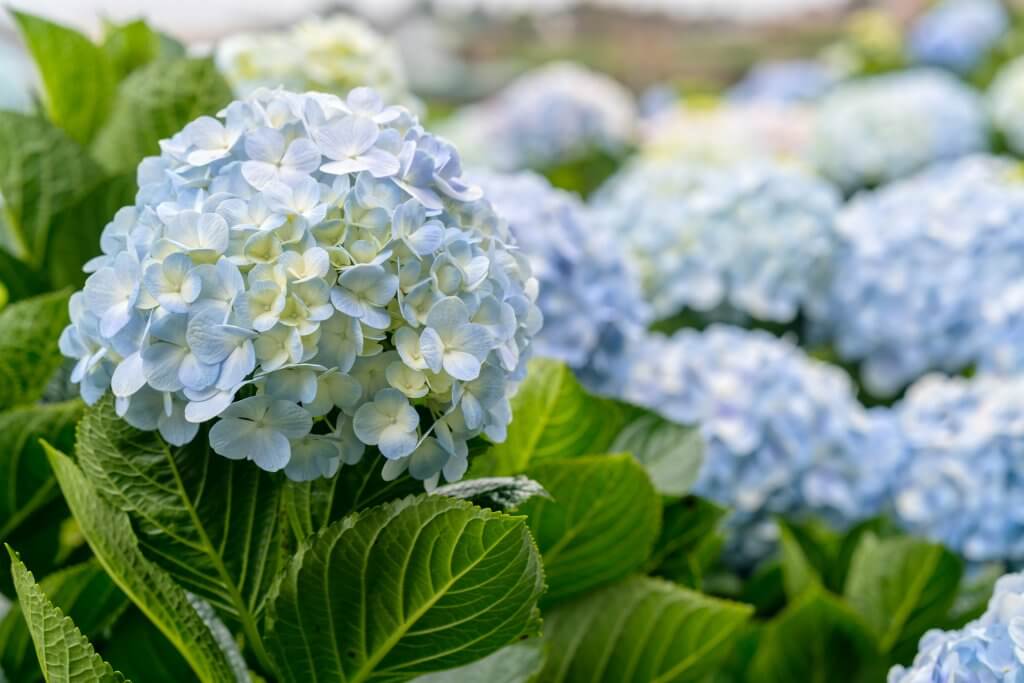If you want to fill your garden with lovely, large flowers, Hydrangeas are a perfect choice. Hydrangeas are famous throughout the world for their large, showy blossoms, and their ease of care. Hydrangea flowers grow on a large shrub, which requires very little maintenance.
Despite being elegant and attractive, Hydrangeas are actually fairly easy to care for, and they will blossom throughout the spring and summer months. When they aren’t blossoming, they are still an attractive shrub for any garden.

Choosing Your Hydrangea
Hydrangeas can grow up to fifteen feet tall, so choosing the right variety is important, and caring for it and trimming it back can become equally important.
Hydrangeas can be hardy in zones 3 to 7, which makes them excellent perennials and staples within any garden. Hydrangeas are often chosen by their flowers, like many other flowering plants. The colour and volume of flowers are usually the most important aspect.
- Bigleaf Hydrangeas are very common, found in zones 5 and 9, and known for their showy leaves as well as their flowers.
- Oakleaf Hydrangeas are better for warmer zones and may not be suitable for perennial use during the winter in colder zones.
- Panicle Hydrangeas grow extremely large and tall, and they are hardy up to zone 3.
- Smooth Hydrangeas have large, white clusters of blooms, and are hardy in most cold climates.
- French Hydrangeas have vibrant, big blooms, and are often used by florists.
- Mophead Hydrangeas have even larger blooms and are a variety of the Bigleaf Hydrangea.
- Lacecap Hydrangeas have large flowers with smaller buds, with a lazy, half-bloomed look.
Those are some of the most common types of Hydrangeas but there are many more! Be aware that some Hydrangeas have natural colouration, but others have colouration due to the soil that they’re grown in. If you transplant it into the incorrect soil, it will lose its colouration.
Where to Buy
UK
If you live in the UK, Amazon.co.uk is the place to buy your Hydrangeas. They have over 6,000 Hydrangeas available to choose from and can have your order deliver to your door. Click here to buy Hydrangeas.
Australia
If you live in Australia, eBay is the place to buy your Hydrangeas. eBay has over 90 plants and seeds to choose from and can have your order deliver to your door. Click here to buy Hydrangeas.


Planting a Hydrangea
Autumn and early spring are the best times to plant Hydrangeas. As a shrub, it may come potted or bare root. You plant your Hydrangea by digging up a hole that is twice the size of the root ball, spreading the roots within the hole, and then back-filling with lightly packed earth.
As with most shrubs, you should water thoroughly after planting, both to compact the soil and provide water for growth.
Hydrangeas do not like full sun, but rather partial sun, so place your Hydrangea in an area where it will get sun but still be sheltered. Usually, this is around a fence line or close to a home.
Don’t plant under trees because the Hydrangea may compete for nutrients, and both plants may become sickly. Good drainage is absolutely vital for a healthy Hydrangeas!


Taking Care of Your Hydrangeas
During its growing season, which is spring through summer, a Hydrangea should be watered with one inch of water per week. You should deeply water three times a week to encourage growth and showier flowers. Hydrangea needs a lot of water.
Add mulch to keep the soil moist, but don’t overwater because this can damage the plant and cause root rot. Fertiliser application depends on the type of Hydrangea you plant. Some need it earlier in the season than others; consult the individual you purchased the plant from.
Prune your Hydrangea to keep it healthy. Don’t deadhead most Hydrangeas, and trim all stems down to the base before winter if the plant has been neglected beforehand.
How to Change the Colour of a Hydrangea
Earlier we mentioned that many Hydrangeas have colouration due to their soil. This is true for many types of Hydrangea. And you can change the colour of your Hydrangea by altering the pH balance of your soil.
Some Hydrangeas have innate colours and are not going to change, many white Hydrangeas are going to remain white regardless. But there are many varieties that will colour shift and you can do this with pH.
Acidic soils usually create blue flowers, whereas more basic soils will create pink flowers. This gives you the opportunity to colour shift your garden by altering the pH, though it does need to be done carefully to avoid disrupting the health of the flowers.
You can also create a very unique gradient by shifting the colour of your garden from one end to the other!


Common Problems With Hydrangeas
Though the Hydrangea may seem difficult to care for, it isn’t. Despite being affected by pH and temperature, in most zones it will be hardy and easy to maintain. Here are a few of the problems you might expect with Hydrangeas.
- Brown, dry, wilted leaves. During the growing season, this shrub may need more water than it seems to. Because a lot of shrubs are very low maintenance, people may not water the Hydrangeas as much as they need to. Hydrangeas should be watered up to three times a week during the growing season, and they will need this water to look their best.
- Failing to grow. Hydrangeas do grow very large, and they can compete with other plants. Most Hydrangeas should be planted away from other large shrubs and trees because they may start to compete for nutrients and neither may be healthy. Additional fertiliser can be used.
- Black spots or holes. Pests can easily start to flourish on the Hydrangea shrubs. Treating with organic pest repellents is usually the answer. Spots can be either pests or fungus; if you detect fungus, treat with a gentle fungicide.
- Burned leaves. Hydrangeas do need some amount of shade during the day, especially during the hottest portions of summer. If your Hydrangea is wilting under the sun, you may want to produce some form of cover.
Now you know everything about the Hydrangea. It is a unique, showy flower that has a lot to love, especially its incredible colour-shifting abilities. It’s relatively easy to care for, which is surprising because of how extravagant it can look.
As long as you keep it in the right soil, water it frequently, and occasionally prune it, you should be fine. Depending on your area, one of the things you should be most concerned about is cold hardiness, as different Hydrangeas can have radically different levels of hardiness depending on zone.
[elementor-template id=”4604″]
[elementor-template id=”6387″]

